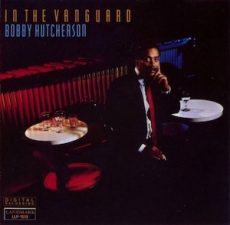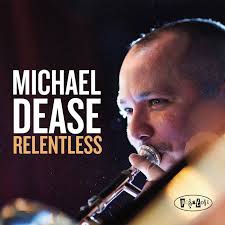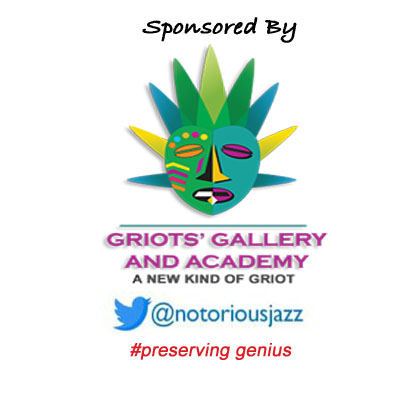
Requisites
Rifftide ~ Al Cohn | By Eddie Carter
Submitted for your approval this morning is an excellent album by Al Cohn. Rifftide (Timeless Records SJP 259) was recorded during the tenor saxophonist’s 1986 European tour. He’s joined on this date by three Danish musicians: Rein De Graaff on piano, Koos Serierse on bass, and Eric Ineke on drums. My copy is the 1987 Netherlands Stereo release. Side One opens with a popular song by Kurt Weill and Ogden Nash, Speak Low. The trio takes off with a lively introduction leading to the quartet’s theme. Al gets everybody in the mood with a spirited opening statement. Rein swings into action next with an energetic reading. Eric has a vigorous conversation with the saxophonist ahead of the theme’s restatement and fadeout.
Blue Monk by Thelonious Monk is a slow blues that was the pianist’s favorite and one of his most recorded songs, a testament to its enduring appeal. The foursome begins the melody gently, leading to Cohn’s gorgeous interpretation. De Graaff is equally graceful on the following solo, and then Serierse shows his tender side in a pretty presentation preceding the reprise and finale. The tempo for the quartet’s quick melody moves upward to begin the 1945 jazz standard, Hot House by Tadd Dameron. Al takes the lead and crafts an exciting solo. Rein meets the challenge with a fiery passion in the following interpretation. Al reappears for the closing chorus and leads the group to the finish line.
The Thing by Al Cooper starts the second side with the foursome’s medium melody. Cohn cruises comfortably into the opening interpretation. De Graaff follows with a silky smooth statement, and then Serierse provides the exclamation point until the closing chorus. We’ll Be Together Again by Carl T. Fischer, and Frankie Laine is a beautiful ballad from the forties, and the group begins with a gentle melody. The saxophonist opens his first of two solos with an intimate story. Rein caresses each note of the following solo with tranquil tenderness. Al returns for his second reading, complemented by the rhythm section’s hauntingly beautiful support before the song’s summation.
The album ends with the title tune Rifftide by Coleman Hawkins. It’s a pretty tune that the quartet opens at a slow tempo for the melody. Cohn’s opening solo is particularly stirring; De Graaff has the next spot and draws the listener into the second statement. Serierse has a short reflective moment closer, leading to the theme restatement and climax. Al’s career, which lasted nearly five decades, was marked by numerous achievements. He recorded thirty-five albums as a leader, including fourteen years co-leading a quintet with Zoot Sims. He was also a successful arranger for several big bands and worked on Broadway. Al Cohn passed away from liver cancer on February 15, 1988, at age sixty-two.
Wim Wigt produced Rifftide, and Max Bollerman, who owns and still operates Studio 44, was the man behind the dials of the recording. The album’s sound quality is stunning, with a stellar soundstage transporting the quartet to your listening room with crystal-clear fidelity. If you’re a fan of cool jazz and post-bop, I invite you to check out Rifftide by Al Cohn the next time you’re on a record-shopping trip. It’s a terrific album that’s sure to please even the most discriminating jazz fan, and I highly recommend it for a spot in your library!
~ Blue Monk, Speak Low, We’ll Be Together Again – Source: JazzStandards.com
~ Al Cohn – Source: Wikipedia.org
~ © 2024 by Edward Thomas Carter
More Posts: choice,classic,collectible,collector,history,instrumental,jazz,music,saxophone

Requisites
In The Vanguard ~ Bobby Hutcherson | By Eddie Carter
This morning’s discussion arose because I’ve been listening intensely to several great vibraphonists in my library recently, leading me to an underrated live album by Bobby Hutcherson. In The Vanguard (Landmark Records LLP-1513) hit the stores in 1987 and documents excerpts of his performance over two December nights the year before at the Village Vanguard. Bobby was the first artist Orrin Keepnews signed for his new record label; this was his third release. The quartet consists of Bobby Hutcherson on the vibraphone and marimba, Kenny Barron on piano, Buster Williams on bass, and Al Foster on drums. My copy is the original U.S. Stereo album.
The opener, Little Niles by Randy Weston, is a jazz waltz. The quartet gets things off to a spirited start with their melody. Bobby opens the soloing with an infectiously swinging groove. Kenny keeps the lyricism intact with a compelling case ahead of the theme’s restatement and close. Estaté by Bruno Martino and Bruno Brighetti is up next. Williams and Hutcherson set the song in motion with a pretty introduction. Barron and Foster enter next to add sensitive warmth to the gorgeous melody. Bobby’s opening solo is beautiful; then Kenny articulates his ideas tenderly while Buster and Al hold everything together into the quartet’s graceful climax.
Well, You Needn’t by Thelonious Monk and Mike Ferro opens with Bobby’s introduction before the ensemble’s theme takes off quickly. Bobby is out of the gate first with an exhilarating reading. Kenny steps up next to play with exciting urgency. Buster and Al share a moment in the closer, preceding the foursome’s return with a quick resolution. Side Two starts with Some Day My Prince Will Come by Frank Churchill and Larry Morey. The ensemble establishes the song with a quaint melody that moves upward for Hutcherson’s opening solo. Barron turns in an exquisite performance next, and Williams provides a superbly conceived finale, one of the album’s highlights before the reprise and ending.
Witchcraft by Cy Coleman and Carolyn Leigh begins with a two-instrument dialogue between Bobby and Buster, segueing into the quartet’s lovely melody. Bobby kicks off the solos with a stream of imaginative ideas. Kenny takes the reins, gliding to the rhythm section’s buoyant beat ahead of the song’s conclusion. I Wanna Stand Over There by Bobby Hutcherson is off to the races during the quartet’s upbeat theme. Barron comes right out of the gate, bristling with energy. Hutcherson follows with a hard-driving interpretation; then Foster provides the album’s final fireworks in a short solo ahead of the theme’s restatement and climax.
In The Vanguard is a digital recording produced by Orrin Keepnews and Tom Mark, the recording engineer. George Horn mastered the album, and Danny Kopelson provided the digital transfer, editing and sequencing at Fantasy Studios. The album’s sound quality is exceptional, capturing the live energy and ambiance of the Village Vanguard. The listener becomes a part of the audience as the musicians perform with crystal-clear fidelity. Despite its high-quality performance and recording, this album is often overlooked in Bobby Hutcherson’s discography. But please don’t let that discourage you from checking out In The Vanguard by Bobby Hutcherson the next time you’re out record shopping. It’s a jazzy treat for your ears and an absolute pleasure to listen to, especially if you enjoy live jazz albums!
Postscript: Estaté is listed on the Side One label and back album cover with two composers, Bruno Martino, and Bruno Brighetti. I have no idea why this happened, but they are the same man, Bruno Martini. He was an Italian composer, pianist, singer, and songwriter. Estaté was his best-known composition; many jazz musicians and vocalists have recorded it since its first appearance in 1960. Martino’s career lasted fifty-five years; he died on June 12, 2000, at age seventy-four.
~ Bruno Brighetti, Bruno Martino – Source: Discogs.com
~ Some Day My Prince Will Come – Source: JazzStandards.com
~ Little Niles, Witchcraft – Source: Wikipedia.org
© 2024 by Edward Thomas Carter
More Posts: choice,classic,collectible,collector,history,instrumental,jazz,music,vibraphone

Daily Dose Of Jazz…
Michael Patrick Dease was born August 25, 1982 in Augusta, Georgia. He attended John S. Davidson Fine Arts Magnet High School where he studied saxophone and voice. He achieved all-state vocal honors for three consecutive years.
At 17 Michael taught himself to play trombone and was soon invited to join the inaugural class of the Juilliard jazz studies program by Wycliffe Gordon. He earned both his bachelor’s and master’s degrees while at the school. While at Juilliard he won many awards, including the Frank Rosolino Award, J.J. Johnson Award, the Sammy Nestico Jazz Composers Award, ASCAP Young Jazz Composer Award, and the Fish Middleton Jazz Competition.[2]
He began his career in Illinois Jacquet’s Big Band in 2002, and has performed as a featured member of the big bands of Christian McBride, Roy Hargrove, Nicholas Payton, Jimmy Heath, Charles Tolliver and the Dizzy Gillespie All-Stars. He also performs with small groups led by Claudio Roditi, Rodney Whitaker, Wycliffe Gordon, and David Sanborn. He has toured extensively throughout Europe, Asia, North America and Latin America. In addition to performance, Dease serves as president and producer at his jazz record label, D Clef Records.
Dease conducts master classes and workshops at universities and conservatories around the world, holds the position of Associate Professor of Jazz Trombone at the Michigan State University College of Music. He has held similar positions at Queens College, CUNY, and The New School for Jazz and Contemporary Music in New York City.
Tenor and bass trombonist, composer, producer and educator Michael Dease continues to perform, compose, record and educate.
More Posts: bandleader,bass,composer,educator,flugelhorn,history,instrumental,jazz,music,piano,producer,saxophone,trombone,trumpet

Daily Dose Of Jazz…
Sara Jacovino was born on July 9, 1983 and earned both a Bahelors and Masters degree in music from the University of North Texas. While there she studied composition with Neil Slater and Paris Rutherford and trombone with Steve Wiest and Tony Baker.
Since leaving Texas for New York City, she has entrenched herself in the jazz scene as a trombonist, composer, and arranger. who has drawn the recognition of many of her peers nationwide. She has received awards from the BMI Foundation, Downbeat Magazine, the Airmen of Note, The International Trombone Association and among others.
Sara leads her own quartet and is a member of The Birdland Big Band, The Diva Jazz Orchestra, David Berger and the Sultans of Swing, Band of Bones, The Manhattan Bridges Orchestra, and The Afro-Bop Alliance. She is an active musician in the Broadway scene performing in numerous musical productions and currently holds the tenor/bass trombone chair in “Tina, The Tina Turner Musical” at the Lunt-Fontanne Theatre.
A sought after session musician as both a lead/section trombonist and soloist. Her writing and playing is often featured by the Birdland Big Band, The Diva Jazz Orchestra, and can be heard on numerous albums by the University of North Texas One O’Clock Lab Band including: “Lab 2008,” “Lab 2007,” “Lab 2006” and “Live at Blues Alley, and by the award winning UTubes Jazz ensemble.
She enjoys working as a guest artist and clinician for University and High school jazz programs. Sara will be a guest performer and clinician at both the International Trombone Festival in 2021 and IWBC Festival in 2022.
Trombonist Sara Jacovino continues to perform, compose, arrange and continues to accept commissioned works.
More Posts: arranger,bandleader,composer,history,instrumental,jazz,music,trombone

Requisites
Pianism ~ The Michel Petrucciani Trio | By Eddie Carter
This morning’s record from the library is an overlooked gem by French pianist Michel Petrucciani. Pianism (Blue Note BT-85124) is his twelfth release as a leader, and it marks his debut with the prestigious label. Recorded just days before his twenty-third birthday, the album captures the trio’s energy they exhibited during a six-week, thirty-two concert tour from Munich to Martinique. Michel Petrucciani, on the Steinway grand piano, is joined by bandmates Palle Danielsson on bass and Eliot Zigmund on drums. Petrucciani composed four of the album’s tunes, and my copy is the 1986 U.S. Stereo release.
Side One of Pianism opens with The Prayer, a poignant tune that chronicles Michel’s and his sweetheart Eugenia’s transition from a lively house with friends to a single home owned by Eliot Zigmund that they lovingly maintained. The track commences with a mesmerizing solo introduction that seamlessly evolves into the trio’s comforting theme. Michel crafts a tapestry of hauntingly sensitive and lyrical notes. Palle follows with a delicately tender interpretation before they reunite to conclude the song softly. Our Tune, a composition that holds a special place in Michel’s heart, picks up the tempo for the threesome’s upbeat melody. He reveals his love and affection for Eugenia in the first solo. Palle takes over for an assertive interpretation. Eliot shares the finale with the pianist until the agile reprise dissolves.
Face’s Face is dedicated to the couple’s pure-blooded Afghan hound. The pianist’s introduction is playful, leading to the trio’s aggressive theme. Michel sets the tone with a brisk performance. Palle fuels the second reading with a dazzling display; then, Michel and Eliot exchange riffs preceding the theme’s restatement and close. The first of two standards, Night and Day by Cole Porter, gets Side Two underway with a breathtaking introduction by Michel that grows into the ensemble’s lively melody. Michel takes off like a rocket shooting skyward on the opening statement. Palle keeps things moving in the second presentation. Eliot gives his drums a vigorous workout before the spotlight returns to Michel for the climax.
Here’s That Rainy Day by Jimmy Van Heusen and Johnny Burke opens with a gorgeous introduction by Michel. Palle and Eliot join him for a relaxed, easy-going theme. Michel starts the proceedings with a beautifully tender interpretation. Palle comes in next for a very pretty performance while Eliot cushions the gentle groove for Michel’s return to take the song out softly. The album’s final track is a catchy tune titled Regina. It’s named for the Brazilian singer, Elis Regina and the trio’s introduction sets the scene for an infectious, danceable melody. Michel opens the solos with a sincerely beautiful performance. Palle feeds off his energy with a compelling reading that flows to the pianist’s return for a few last thoughts preceding the theme’s restatement and fade out.
Mike Berniker produced Pianism, and Mike Moran was the recording engineer of this digital release. The album’s sound quality is outstanding, with a stunning soundstage that really shines on a quality audio system with excellent fidelity. The record is also quiet until the music begins. Despite suffering from a genetic spinal disease that caused brittle bones and resulted in his inability to grow tall, Michel Petrucciani was one of the most accomplished pianists in jazz. He performed live over one hundred times twice in two years despite being in constant pain, a testament to his passion and dedication to his craft. In addition to recording twenty-five albums as a leader, Petrucciani also recorded with Steve Grossman, Charles Lloyd, Joe Lovano, and The Manhattan Project.
He was interviewed regularly and appeared on television quite a few times. Michel died from a pulmonary infection on January 6, 1999, shortly after his thirty-sixth birthday. But his music continues to inspire and captivate jazz fans and is an absolute joy to listen to. If you’re in the mood for a musical journey, I wholeheartedly recommend exploring Pianism by The Michel Petrucciani Trio on your next record shopping trip. It’s not just a terrific addition to your jazz library but also a perfect gateway to his discography that can be enjoyed endlessly!
~ Here’s That Rainy Day, Night and Day – Source: JazzStandards.com
© 2024 by Edward Thomas Carter
More Posts: choice,classic,collectible,collector,history,instrumental,jazz,music,piano




